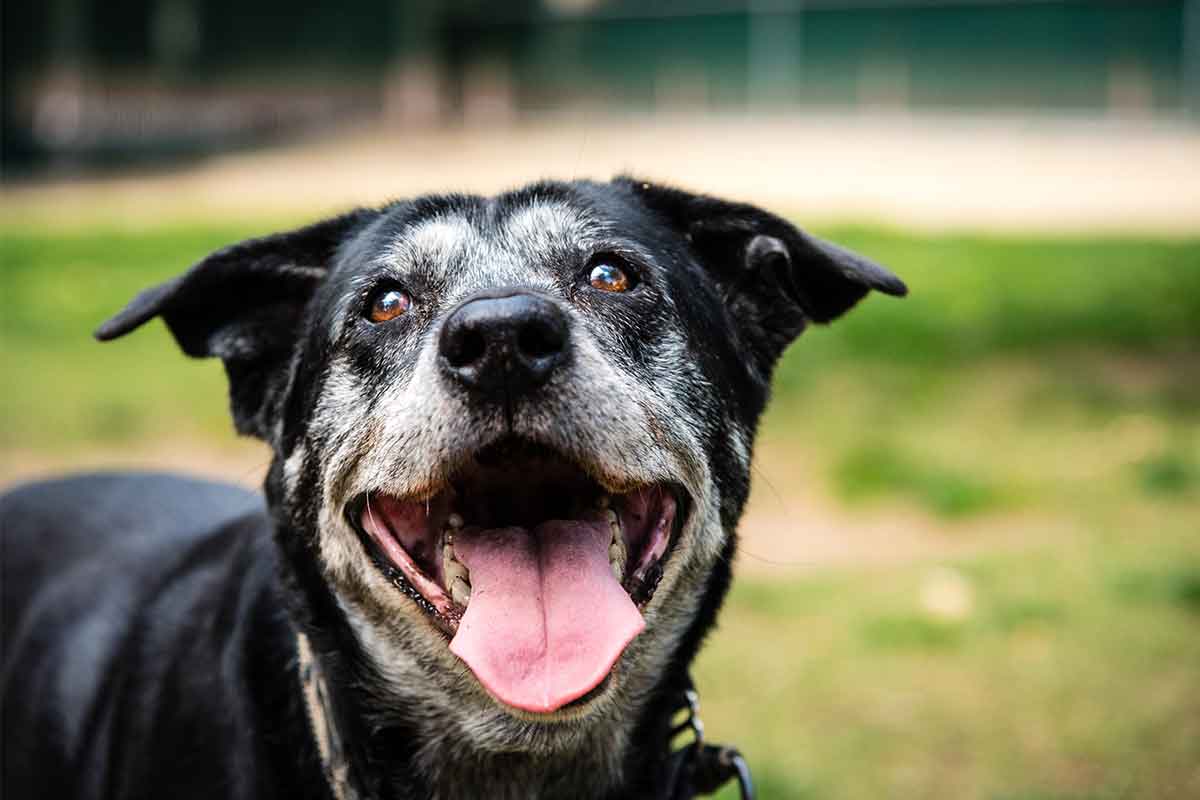You love your golden oldie canine more than anything, but your relationship has changed. He’s not as active as he used to be, and your days of jogging or hiking with him are in the past. Maybe a puppy would revitalize him and give you a new exercise partner.
Before you move ahead with that plan, though, consider whether it’s really in your senior dog’s best interests. It’s easy to assume that an old dog will instinctively get along with a puppy, but that’s not always the case, says Marsha Reich, DVM, a veterinary behavior specialist who lectured on this topic at the 2017 American Veterinary Medical Association conference in Indianapolis.
“Sometimes it works out, but often not,” she says.
That’s because owners may not notice the older dog’s subtle passive attempts to avoid interacting with a rambunctious puppy. These can include walking away from the younger dog, starting to walk into a room and then leaving because the younger dog is already there, avoiding eye contact—especially common if the senior dog has mobility problems—and freezing. In other words, he does his level best not to have anything to do with the young whippersnapper.
A more assertive older dog may take active steps to avoid interaction: lip lifting, snarling, growling, snapping, or biting. It’s all too easy to view this as normal—the older dog “putting the younger one in his place”—but it’s not desirable and can lead to trouble.
How this conflict behavior goes over depends on the individual dogs. The younger dog may give the senior dog a wide berth and avoid interactions or he may try harder to buddy up with the old dog, resulting in more “corrections” from that dog. A young dog in this situation who is anxious may become afraid of all other dogs, Dr. Reich says.
Aggressive behavior on the part of the older dog can also cause a younger dog to behave aggressively in self-defense. That can result in injury to the senior dog.
You can successfully introduce a younger dog to the household, but it’s important to manage interactions wisely. Here are seven ways to keep both dogs safe and happy.
- If you notice your older pet trying to avoid interaction, take the younger one for a walk or give him a chew or puzzle toy to occupy his mind.
- Physically separate pets when you can’t be there to supervise or at night when you’re asleep.
- Don’t encourage or force one pet to be closer to another than he’s comfortable with. “People are always doing that, thinking they are treating the animals fairly or trying to show one animal that the other isn’t so bad,” Dr. Reich says. “If people encourage a dog to enter a room despite his hesitation, the dog being approached or cornered may defend himself aggressively from the entering dog.”
- Figure out which dog is being more inappropriate and address that situation. Is the young dog too energetic or anxious or is the old dog excessively grumpy? If it’s the former, play with the younger dog more without the senior dog around. If the latter, take your oldster in for a veterinary exam to make sure he’s not in pain from arthritis, gastrointestinal issues, endocrine disorders, or anxious about other issues such as hearing or vision loss.
- Increase interactions that both dogs enjoy together, such as walks or being in the yard. It’s okay for the younger dog, for instance, to be more active in the yard while the older dog lazes in the sunshine. They don’t have to actively play with each other.
- Separate the dogs when high-value food items are on offer, or provide treats in a smart way. Younger dogs often eat their treats more quickly and then look around for more. “Divide sizes so that if one dog is a fast chewer and one is a slow chewer, they both finish at the same time,” Dr. Reich says.
- Most important, don’t let problems go without addressing them. The earlier you identify issues and deal with them, the more likely the dogs will eventually learn to get along and even become friends.
This article was reviewed/edited by board-certified veterinary behaviorist Dr. Kenneth Martin and/or veterinary technician specialist in behavior Debbie Martin, LVT








